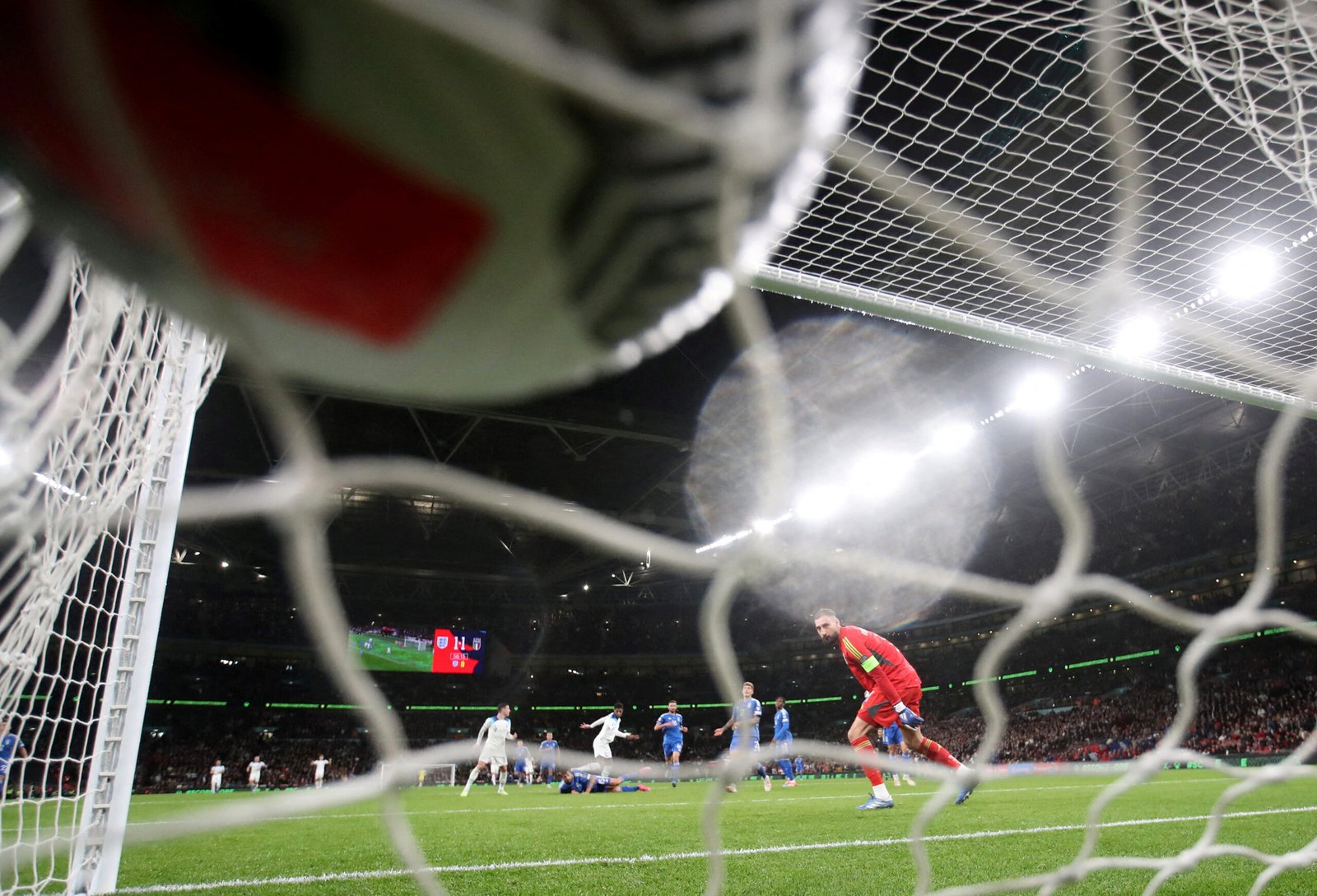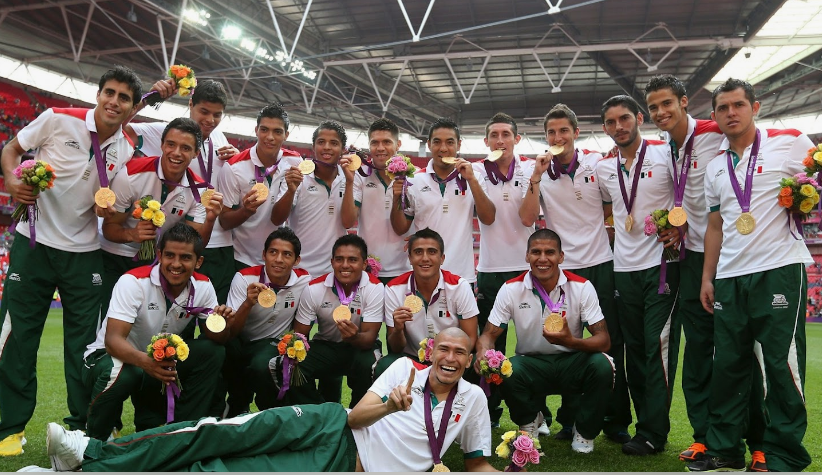A soccer field is called a pitch because it refers to the marked-out area where the game is played. The term originates from the British term for a piece of land.
Soccer, or football as it’s known outside North America, boasts millions of fans worldwide, and the word “pitch” is synonymous with the sport’s playing field. The terminology reflects the rich history and tradition of the game, especially in the United Kingdom, where A soccer field holds a treasured place in national culture.
Dating back to the 19th century, the term “pitch” was used to describe the process of marking out a playing area by “pitching” stakes into the ground. Today, every match unfolds on a meticulously prepared pitch, where players exhibit their skills and athleticism. Understanding soccer terminology, like the word pitch, enhances the connection between the sport and its ardent followers.
A Soccer Field Called

History of Soccer Field
The sport of soccer, rich in history, has evolved significantly over time. From the early beginnings of the game to the vibrantly lush fields we see today, every element of soccer holds a story—especially the field itself. Pondering why is a soccer field called a pitch. Let’s delve into the roots and changes this term has undergone.
Origin Of The Term pitch
The word ‘pitch’ comes from the Old English ‘piccan’ meaning ‘to thrust, fix, or set.’ In medieval England, villages played soccer on common land. Before a match, they pitched goalposts each time, giving birth to the phrase ‘on the pitch.’ This was the beginning of on-the-pitch soccer meaning.
Evolution Of Soccer Field Terminology
As soccer spread globally, different names arose for the field. In some places, it became known as a ‘soccer field’, but the original term ‘pitch’ endured. The language evolved, but the core remained.
| Term | Region | Description |
|---|---|---|
| Pitch | UK, Commonwealth | The traditional terms, linked to the historical setup of the field |
| Soccer Field | USA, Canada | The modern equivalent of ‘pitch’ adapted by North Americans |
Today, regardless of the term – what is a soccer field called often depends on where you are. Whether you say ‘pitch’ or ‘field’, the love for the game remains universal.
Meaning And Usage
The ‘Meaning and Usage’ of the term ‘pitch’ in soccer describes the playing area. The word stems from the act of ‘pitching’ or setting up one’s playing field. Teams compete on this grassy stage, which is central to the beautiful game’s identity.
The Term ‘pitch’ In Football
The term ‘pitch’ historically signifies the action of marking out a playing area. In football, this marked area is where the game unfolds. ‘Pitch’ draws from the old process of ‘pitching’ tents, parallel to staking out the game’s territory. Football adopted this usage, with the word evolving to be synonymous with the sport’s field.
Global Adoption Of The Term
While ‘soccer field’ is common in North America, ‘football pitch’ is the preferred term globally. FIFA, the sport’s international governing body, uses ‘pitch’ in its official documents, reflecting this widespread acceptance.
Use And Variations Across Different Regions
- United Kingdom: ‘Pitch’ is standard, reflecting the sport’s origins.
- North America: People use ‘soccer field’ to distinguish from ‘football’.
- Australia and New Zealand: Both ‘pitch’ and ‘field’ are in use, depending on context.
- Latin America: Terms like ‘concha’ in Spanish prevail, but ‘pitch’ is understood.
Technical Aspects
Peering into the technical aspects of a soccer field, often referred to as a pitch, reveals a world of precision and standards. These are vital for the game’s integrity. Understanding the specifications of the pitch adds depth to our appreciation of the sport.
Dimensions And Markings
The rules of soccer, known as the “Laws of the Game”, dictate strict guidelines for pitch dimensions. A professional-sized football field, or pitch, spans from 100 to 110 meters in length and from 64 to 75 meters in width. These dimensions ensure fairness and uniformity across different venues.
- Length: 100 to 110 meters
- Width: 64 to 75 metres
Grass Or Artificial Turf
The foundation for any soccer pitch can be natural grass or artificial turf. Each has its benefits, with natural grass offering traditional play and artificial turf providing durability and lower maintenance.
| Grass | Artificial Turf |
|---|---|
| Traditional feel | Durable |
| Requires more upkeep | Lower maintenance |
Goal Posts And Netting
The goalposts and netting are critical features on a pitch. They frame the target area where teams aim to score. The posts measure 7.32 meters wide and 2.44 meters high, ensuring a standardized goal size globally.
- Width of goal: 7.32 metres
- Height of goal: 2.44 metres
Etymology Of The Term
Delving into the origins of common terms can reveal much about a culture and its history. One such term is the soccer ‘pitch,’ a word that has crossed borders and generations. Tracing the etymology of ‘pitch’ unfolds a tale of evolution and convention in sports and linguistics.
Origins And Historical Context
Pitch’ eventually became synonymous with the marked-out ground used for soccer games. It conveyed the idea of a marked-off area where a match takes place. In a fascinating twist of language, what began as a verb transformed into a noun now inseparable from the sport.
Connection To Pitch As Playing Surface In Other Sports
Interestingly, the application of ‘pitch’ isn’t exclusive to soccer. It’s also used in other sports such as cricket and rugby. In each case, ‘pitch’ refers to the ground on which the sport is played.
- In cricket, the term ‘pitch’ describes the strip between the wickets.
- For rugby, it encompasses the entire grassy playing surface.
Cultural References And Language
The term ‘pitch’ in soccer holds rich cultural and linguistic significance. It extends beyond the game, weaving into the fabric of societies that cherish the sport. The origin of ‘soccer pitch’ intertwines with history, becoming a staple term in the lexicon of sports enthusiasts worldwide. Let’s explore how cultural references and language have shaped the way we refer to the beloved soccer field.
Influence In Popular Culture
In movies, books, and songs, soccer pitches often serve as backdrops for pivotal scenes. The green expanse symbolizes unity, passion, and the stage where dreams play out. Notable films like “Bend It Like Beckham” capture the pitch’s essence, bringing its cultural importance to the spotlight. Songs like “Three Lions” echo the sentiments and stories carved into the grassy plains, cementing the term ‘pitch’ in popular culture.
Usage In Football Commentary
Listen to any soccer match, and you’ll hear commentators regularly use ‘pitch’ to describe the field of play. Phrases like “a magical run across the pitch” or “defenders holding their lines on the pitch” add drama and excitement. Their commentary paints a vivid picture of the action, making the term ‘pitch’ synonymous with soccer itself.
Translations In Different Languages
Across the globe, the word ‘pitch’ translates into a myriad of terms. Here are a few:
- Spanish: campo
- French: Terrain
- German: Spielfeld
- Italian: campo
- Portuguese: campo
Each translation reflects the unique cultural nuances, yet they all share the common thread of soccer’s universal appeal. Whether it’s a ‘campo’ or a ‘Spielfeld’, the pitch remains an iconic aspect of the beautiful game.
Symbolism And Significance
The term ‘pitch’ carries with it a deep symbolic weight. Beyond simply being what a soccer field is called, it reflects the very essence of the game. Not everyone knows why is a soccer field called a pitch quiet, but its meaning runs deep. The spaces where players come together are more than just physical grounds; they are arenas where sportsmanship, unity, and competition thrive. The name is not mere tradition— it is a nod to soccer’s historical significance and its power to unite people from various walks of life.
Soccer’s Historical Roots And Associations
The name ‘pitch’ has roots in the rich soil of history. Originating from the Old English term ‘ping’, which refers to the action of setting something down or planting, the term has evolved both in meaning and use. Soccer, known to many around the world as football, finds its history intertwined with this term. The size of a football pitch in meters, typically ranging between 90 and 120, symbolizes more than boundaries—it represents a common ground forged by the very act of play.
The notion of a pitch has a unique resonance. On the pitch, soccer meaning becomes tangible, as a flat area is transformed into a battleground of strategy and skill. This shared ground holds a sacred place in the hearts of fans and players alike, referred to with the same reverence across continents as what a football field is called.

A Space For Unity And Competition
A pitch is more than just soccer field dimensions marked by white lines. It is a canvas where epic stories unfold, where every match is a dance of tactical prowess. A place where terms like ‘what are the rules of soccer known as’, or simply the laws of the game, mold the landscape of each clash.
Each touch, each move, and each goal narrates a story of perseverance and passion, a testament to the pitch’s power to nurture legends. This field is not just a mere playing area; it is the heart of soccer, pumping the spirit of the game through each match. Thus, the pitch stands as a token of both individual brilliance and collective effort, a place where dreams are chased and legacies are built.
Alternative Terms And Regional Variations
The term ‘pitch’ for a soccer field has its origins steeped in tradition. As we explore the vocabulary of the sport, it’s clear that different cultures and locales favor their own unique terms. Understanding these variations is not just a linguistic journey but also a cultural one, highlighting the global love for this game.
Other Words For Soccer Field
The word ‘pitch’ is just one way to describe the expanse of green where soccer is played. Around the world, various terms are embraced:
- Ground – often used in the United Kingdom.
- Field – favored in the United States and Canada.
- Football pitch – a term synonymous with ‘soccer field’ outside North America.
- Playing field – a more generic term also widely accepted.
Regional Nomenclature Differences
In soccer’s far-reaching corners, the name given to a soccer field can reflect local dialects and footballing culture.
| Region | Term Used |
|---|---|
| United Kingdom | Pitch |
| United States/Canada | Soccer field |
| Australia/New Zealand | Football field |
| Latin America | Cancha |
| South Africa | Soccer pitch |
These distinctions underscore the vast reach and cultural significance soccer has worldwide. Whether it’s played on a ‘cancha’ in Argentina or a ‘pitch’ in England, the richness of the game remains universal.

Future Changes And Innovations
As the beautiful game evolves, so does the stage upon which it is played. A soccer field, traditionally known as a pitch, may soon see significant shifts in its design and function. This continuous cultural and technological growth prompts one to reflect on questions like “Why is a soccer field called a pitch quit?” or “What is a soccer field called?” Exciting changes lie ahead for soccer enthusiasts, not only in how the game is played but also in the environment that supports it.
Emerging Technologies In Soccer Field Design
Advancements in technology are set to transform the traditional size of a football pitch in meters and the very essence of on-the-pitch soccer meaning. Players and fans alike can anticipate fields that:
- Adjust size dynamically to accommodate multiple sports and age groups.
- Employ LED underlay systems for advertising and player analytics.
- Integrate sensors to monitor pitch conditions and player performance in real time.
Impact Of Artificial Intelligence And Robotics
Artificial Intelligence (AI) and robotics are primed to revolutionize soccer field maintenance and game analysis. These technologies promise to:
- Automate groundskeeping, ensuring optimal pitch conditions.
- Provide advanced analytics for player training and development.
- Enhance fan experiences with interactive robots serving as guides and assistants.
Environmental Considerations
Environmental sustainability is becoming a crucial factor. Upcoming soccer pitch designs are focusing on reducing the carbon footprint by:
| Feature | Environmental Benefit |
|---|---|
| Organic hybrid turfs | Water conservation and reduced pesticide use |
| Solar-powered lighting | Renewable energy usage |
| Recycled materials for construction | Waste reduction and resource efficiency |
This shift not only reflects the sports’ respect for nature but also sets a standard for future sports facilities. Such innovations align with the rules of soccer, known as the Laws of the Game, by promoting fairness and integrity not just in play, but also in its environmental impact.

Frequently Asked Questions of Why Is A Soccer Field Called A Pitch
What is the origin of the pitch for soccer fields?
The term “pitch” originates from the British verb “to pitch,” meaning to set something down firmly. Historically, playing areas were marked by pitching flags into the ground, hence the term.
How big is a standard soccer pitch?
A standard soccer pitch measures 100–110 meters in length and 64–75 meters in width, as defined by FIFA regulations for international matches.
Why is it not called a soccer field everywhere?
The term “soccer field” is primarily used in North America, where “football” refers to American football. Elsewhere, the term “pitch” is traditional and aligns with international terminology for the sport.
Does pitch size affect soccer gameplay?
Yes, pitch size can influence the gameplay. Larger pitches favor stamina and speed, providing more space for players to maneuver, while smaller pitches can result in a faster, more technical game.
Conclusion
Exploring the origins of the term ‘pitch’ takes us on a historical journey through the evolution of soccer. It reminds us that language is as fluid and dynamic as the game itself. Whether you’re an avid fan or a newcomer to the sport, remembering why a soccer field holds this traditional name connects us to soccer’s rich heritage.



